Kyoto is where the ancient soul of Japan still lives and breathes. With over a thousand temples, it’s not just a city of historic monuments; it’s a place of living tradition, quiet introspection, and sacred beauty. During my solo travels through Japan, Kyoto held me in its rhythm, teaching me to slow down and simply observe. What I thought would be a two-day temple tour turned into a week-long spiritual exploration I’ll never forget.
Whether you’re a first-time visitor or a returning traveler, the following ten temples stand out for their beauty, history, and emotional resonance. Each one offers something different: a moment of peace, a glimpse into the past, or a sense of wonder that lingers long after you’ve left.
1. Kinkaku-ji (The Golden Pavilion)

Kinkaku-ji is Kyoto’s shimmering icon. Its two upper stories are covered entirely in gold leaf, glowing like a beacon beside a perfectly still pond. Built in the 14th century as the retirement villa of Shogun Ashikaga Yoshimitsu, it was later converted into a Zen temple. Despite suffering multiple fires over the centuries, it has been meticulously restored to preserve its ethereal beauty.
The real magic lies in the reflection. On a clear morning, the pavilion’s golden face mirrors flawlessly across Kyoko-chi (Mirror Pond), surrounded by lush pine trees and stone islands that seem placed by nature, but are actually the result of deliberate landscape artistry. It’s no surprise that Kinkaku-ji is a UNESCO World Heritage Site and one of the most photographed sites in Japan.
I recommend visiting as soon as the gates open to enjoy a few quiet minutes before the crowds arrive. Pause by the pond, sip matcha in the small tea garden nearby, and allow yourself to be fully still. It’s more than just a sightseeing stop; it’s a visual meditation.
2. Ginkaku-ji (The Silver Pavilion)
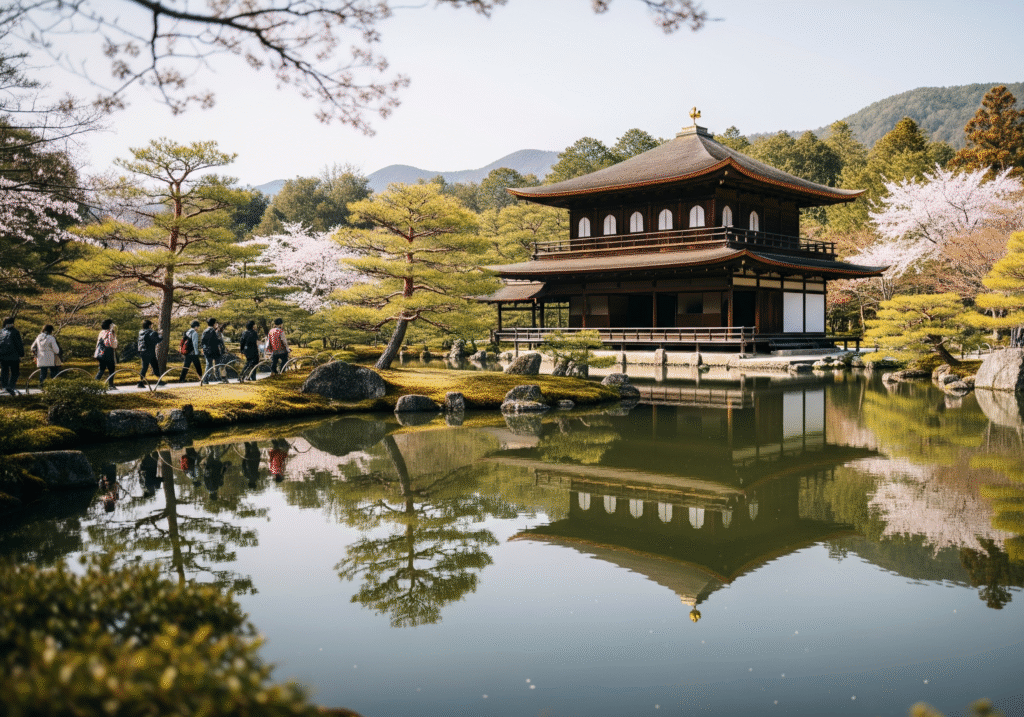
Ginkaku-ji was intended to rival Kinkaku-ji, but in a twist of fate, its silver coating was never completed. And yet, its natural wooden exterior aged into something perhaps even more powerful, a living symbol of wabi-sabi, the beauty of imperfection and impermanence. This temple invites you to stop seeking grandeur and instead find beauty in the subtle.
The temple grounds are a masterwork of Zen design. From the meticulously raked “Sea of Silver Sand” to the moss-covered forest paths, every corner encourages quiet reflection. The contrast between the earthy textures and the precision of the garden lines evokes a deep calm. I found myself walking slower, breathing deeper, and observing details I’d normally miss.
After touring the temple, I followed the Philosopher’s Path, a serene walkway that begins nearby. It runs along a cherry tree-lined canal and is especially magical during sakura season. Ginkaku-ji isn’t just a destination, it’s an entry point into a more thoughtful way of being.
3. Kiyomizu-dera
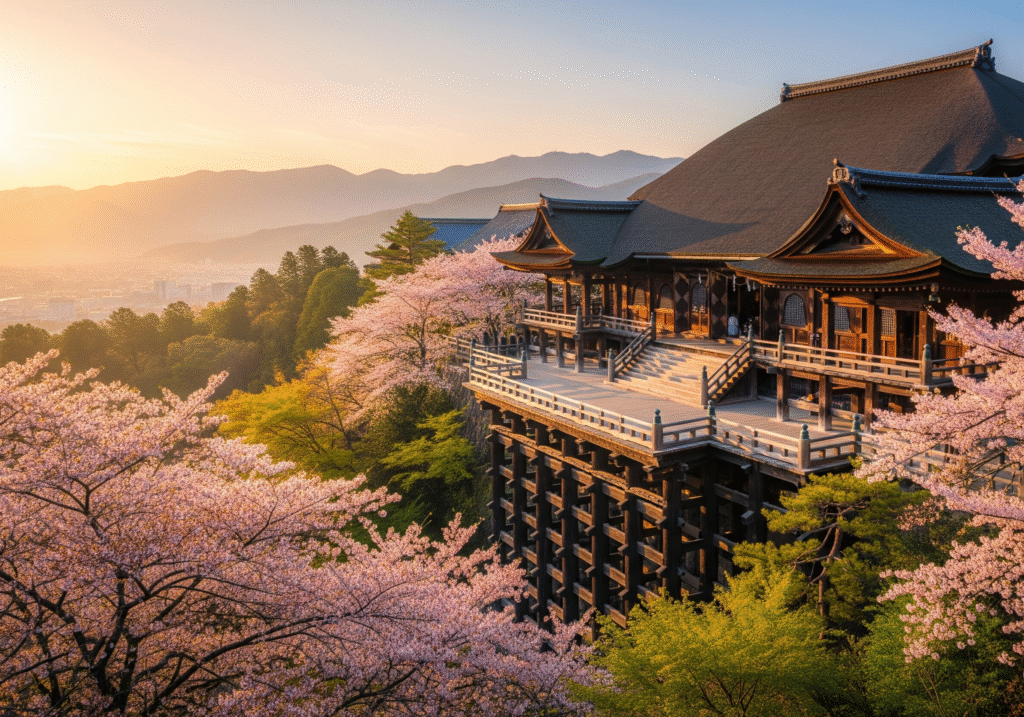
Kiyomizu-dera, meaning “Pure Water Temple,” is one of Kyoto’s most dramatic and spiritually significant sites. Located on the eastern hills, its massive wooden terrace juts out over a forest, offering sweeping views of the city below. What’s most incredible is that the entire stage was built without a single nail just centuries-old carpentry genius.
The temple dates back to 778 AD, and while its architecture is stunning, its emotional energy is just as powerful. I arrived near sunset, walking through the charming streets of Higashiyama, and felt a swell of emotion as the golden light spread across the valley below the terrace. It’s not just the view that stays with you, it’s the silence shared by hundreds of other travelers looking out over the same horizon.
Be sure to explore the Jishu Shrine within the complex, where locals come to pray for love and luck. And don’t miss the Otowa Waterfall at the base of the temple, where you can drink from streams offering health, longevity, or academic success. Just choose wisely, you can only pick one.
4. Ryoan-ji
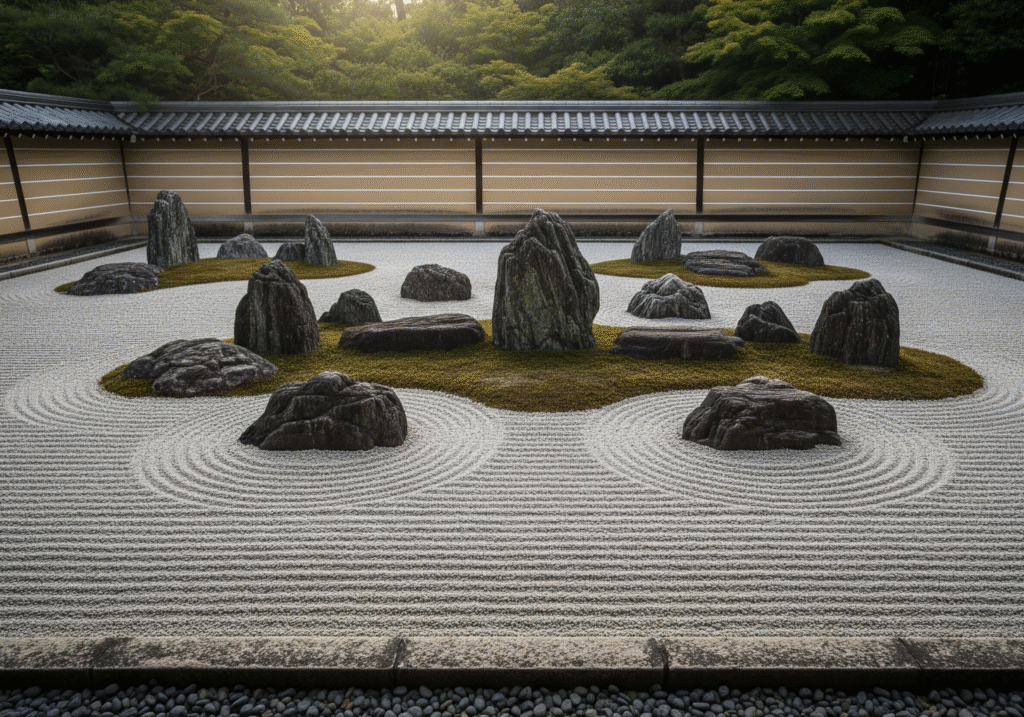
Ryoan-ji is minimalism perfected. The temple’s fame comes largely from its enigmatic rock garden: 15 stones placed carefully in white gravel, arranged so that you can only ever see 14 at once unless you reach enlightenment. No one knows the intended meaning, which leaves visitors to bring their own interpretations.
I sat on the viewing platform for nearly an hour. At first, I thought I was just staring at rocks. But slowly, my mind started to settle. The asymmetry, the raked lines, the way moss grows only in certain places, it all started to feel intentional, like a quiet conversation in a language I was beginning to understand.
The temple grounds are equally peaceful, with a reflective pond, mossy paths, and beautiful seasonal flowers. If Kyoto feels like a city of spiritual landmarks, Ryoan-ji is its quiet heart, a space to sit, observe, and simply be.
5. Tofuku-ji
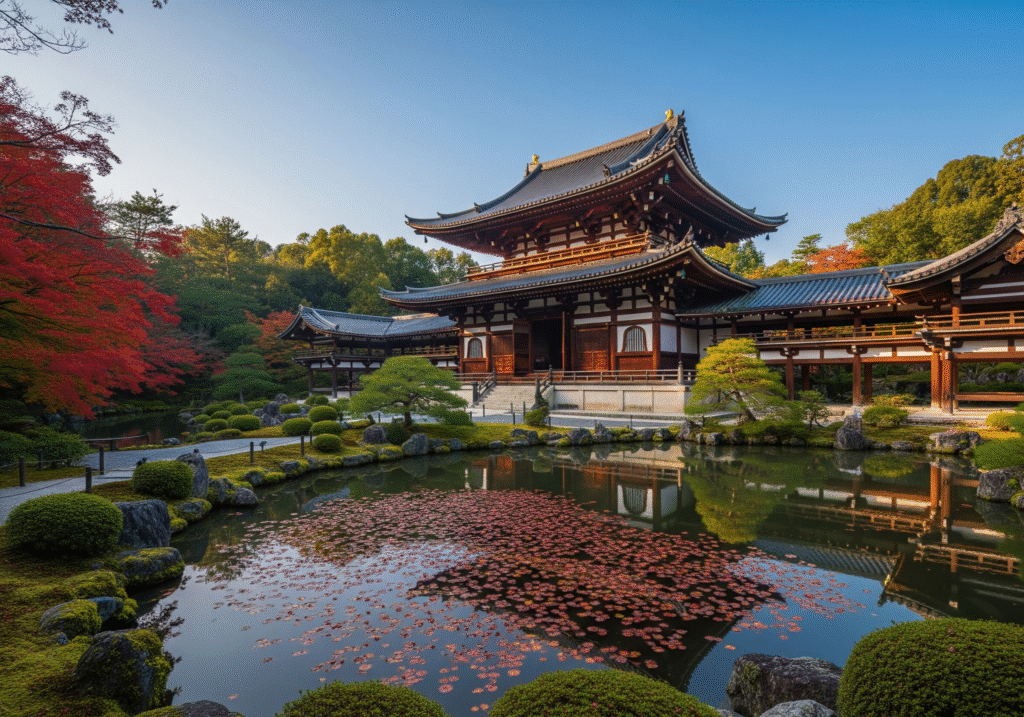
Tofuku-ji is especially famous for its autumn colors, when thousands of maple trees surrounding its wooden bridges ignite in brilliant red and orange. Even outside of fall, though, the temple is stunning. It’s one of Kyoto’s oldest and largest Zen temples, founded in 1236, and it still functions as an active training monastery.
The highlight for many is the Tsutenkyo Bridge, which stretches over a forested ravine. I visited in early November, and although the leaves weren’t yet at peak color, the sense of floating above the trees was unforgettable. Every step on the bridge gives you a slightly different frame, each more beautiful than the last.
Tofuku-ji also boasts some of the most exquisite Zen gardens in the city. Designed by modern master Mirei Shigemori, the four-quadrant gardens around the main hall blend ancient philosophy with modern expression. It’s a reminder that Kyoto isn’t frozen in time, it continues to evolve, beautifully.
6. Sanjusangen-do
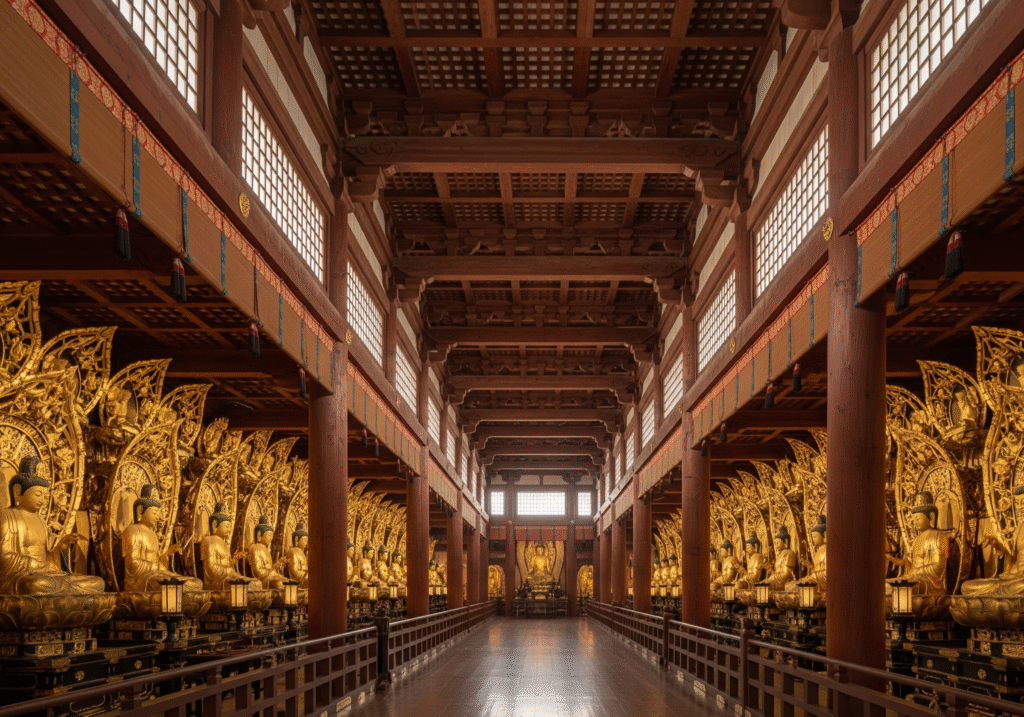
Walking into Sanjusangen-do is like entering another world. The name means “Hall with 33 Spaces Between Columns,” but its true claim to fame lies in the 1,001 statues of Kannon, the goddess of mercy, that line the main hall. Each one is life-sized, each slightly different, and each hand-carved from cypress wood over 700 years ago.
The effect is overwhelming in the best possible way. The hall is dimly lit, quiet except for the sound of your footsteps. Standing among the rows of serene golden figures, I felt as though I was being observed, not judged, but gently seen. It’s a deeply humbling experience.
Photography isn’t allowed inside, which I found refreshing. You’re forced to be present, to absorb the experience without a lens. Outside the hall, the temple grounds are simple but peaceful a good place to reflect on what you just witnessed.
7. Nanzen-ji
Nanzen-ji is a complete sensory experience. Nestled at the base of the Higashiyama mountains, it offers massive temple gates, peaceful gardens, and an unexpected Meiji-era aqueduct that adds a layer of visual contrast. The temple was originally a retirement villa for an emperor before becoming one of the most influential Zen temples in Japan.
As I walked through the massive Sanmon Gate, I was struck by the sheer scale. The view from the top is worth the climb, offering a panorama of the surrounding temples and city below. From there, I wandered through sub-temples, each with its own distinct style and garden.
The aqueduct, a red-brick structure from the 1800s, arches its way through the moss-covered grounds. It feels out of place yet somehow harmonious. It’s the kind of scene you can only find in Kyoto, where the old and new don’t clash, but complement each other.
8. Daigo-ji

Daigo-ji is a temple of layers, both physically and spiritually. The complex is divided into three sections: Sanbo-in at the base, the mid-slope area, and Kami-Daigo at the top of the mountain. If you’re up for it, hiking all the way to the summit rewards you with solitude, panoramic views, and a sense of earned serenity.
The lower grounds are popular during cherry blossom season, where the five-story pagoda and koi-filled ponds set a perfect hanami scene. I arrived in spring and saw hundreds of locals picnicking under pink petals, it felt joyful, communal, and deeply Japanese.
But the real magic happened when I decided to hike to Kami-Daigo. The trail was steep, the path nearly empty. As I reached the upper temple, surrounded by ancient trees and silence, I felt as though I’d stepped into a different century. If you’re physically able, this hike is one of Kyoto’s most rewarding off-the-beaten-path experiences.
9. Eikan-do Zenrin-ji
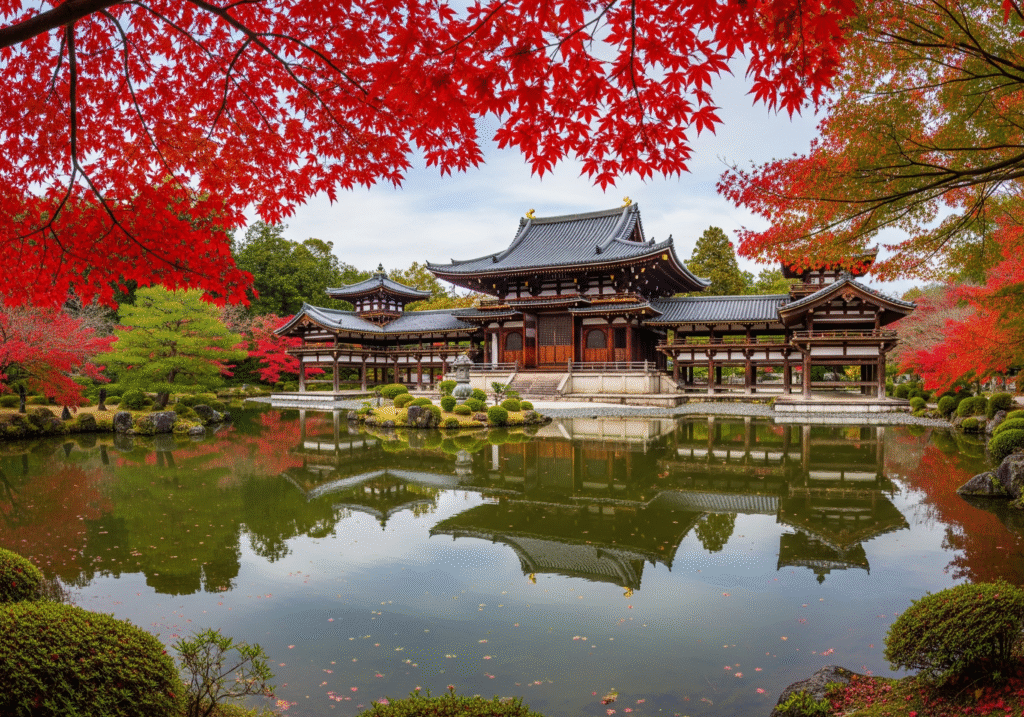
Eikan-do is often overlooked in guidebooks, but it’s one of the most beautiful and emotionally moving temples I’ve visited. Known for its vibrant fall foliage, the temple grounds are a labyrinth of wooden walkways, reflective ponds, and prayer halls, all arranged with breathtaking elegance.
The main hall houses a rare statue of the Amida Buddha looking over its shoulder, said to symbolize the deity’s compassion for those who lag behind on the path to enlightenment. That image stuck with me long after I left. It’s a reminder that no one is ever truly forgotten.
I visited during the koyo (autumn leaves) season and was stunned by the reflection of red and orange leaves in the temple’s central pond. Unlike the busier foliage spots, Eikan-do retains a hushed, contemplative atmosphere. If you want to see Kyoto’s spiritual and seasonal beauty in harmony, come here in November.
10. Fushimi Inari Taisha
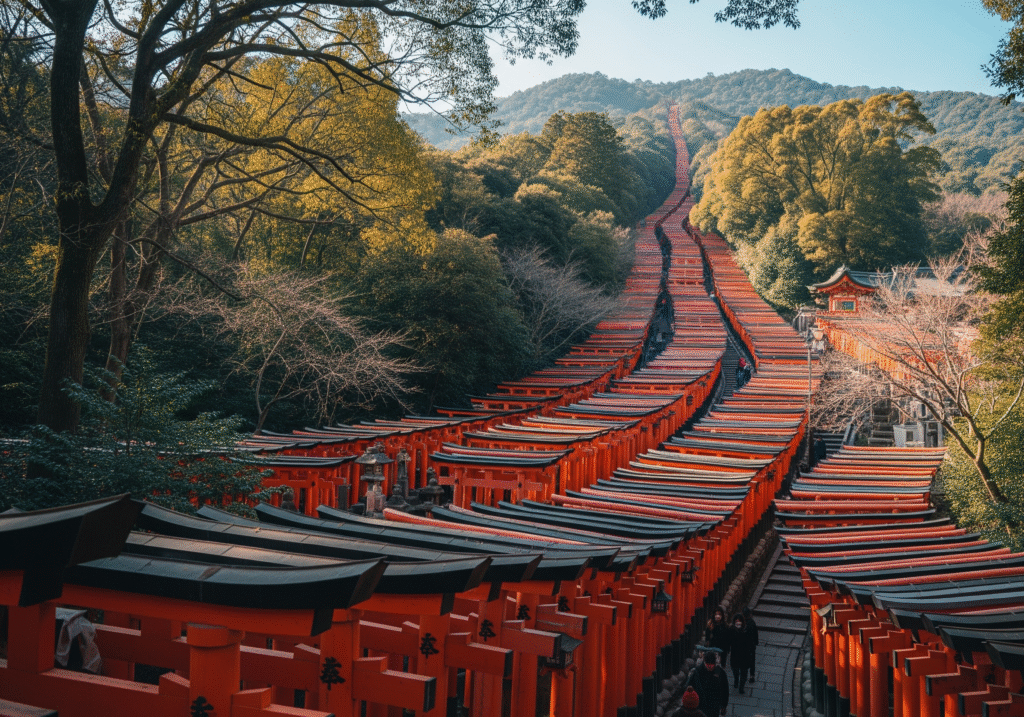
While technically a Shinto shrine, no list of spiritual destinations in Kyoto is complete without Fushimi Inari. Known for its iconic vermilion torii gates that stretch over 4 kilometers up Mount Inari, this site is both a visual spectacle and a spiritual journey.
I started my hike before dawn, flashlight in hand. As the sky brightened, the thousands of gates began to glow, orange and red against the forest green. With each step upward, the crowds thinned, and a quiet rhythm took over. Small sub-shrines, fox statues, and offerings line the path, making it feel like a pilgrimage through time.
Reaching the summit, I found a quiet clearing and sat alone for a while, listening to the wind and distant temple bells. Fushimi Inari isn’t just about the photos. It’s about movement, transition, and personal intention. It’s the perfect place to end or begin any trip to Kyoto.
🌸 Final Thoughts: More Than Monuments
Kyoto’s temples are not just historic buildings; they’re invitations to slow down, reflect, and connect with something deeper. Whether you visit ten temples or only one, each offers a chance to pause in a world that rarely does. I hope this guide helps you discover the beauty, both seen and unseen, that awaits in Japan’s spiritual heart.
✨ “In Kyoto, I didn’t just visit temples, I rediscovered stillness.” – Malik Thompson
The Ultimate Kyoto Travel Guide: Temples, Traditions & Timeless Beauty

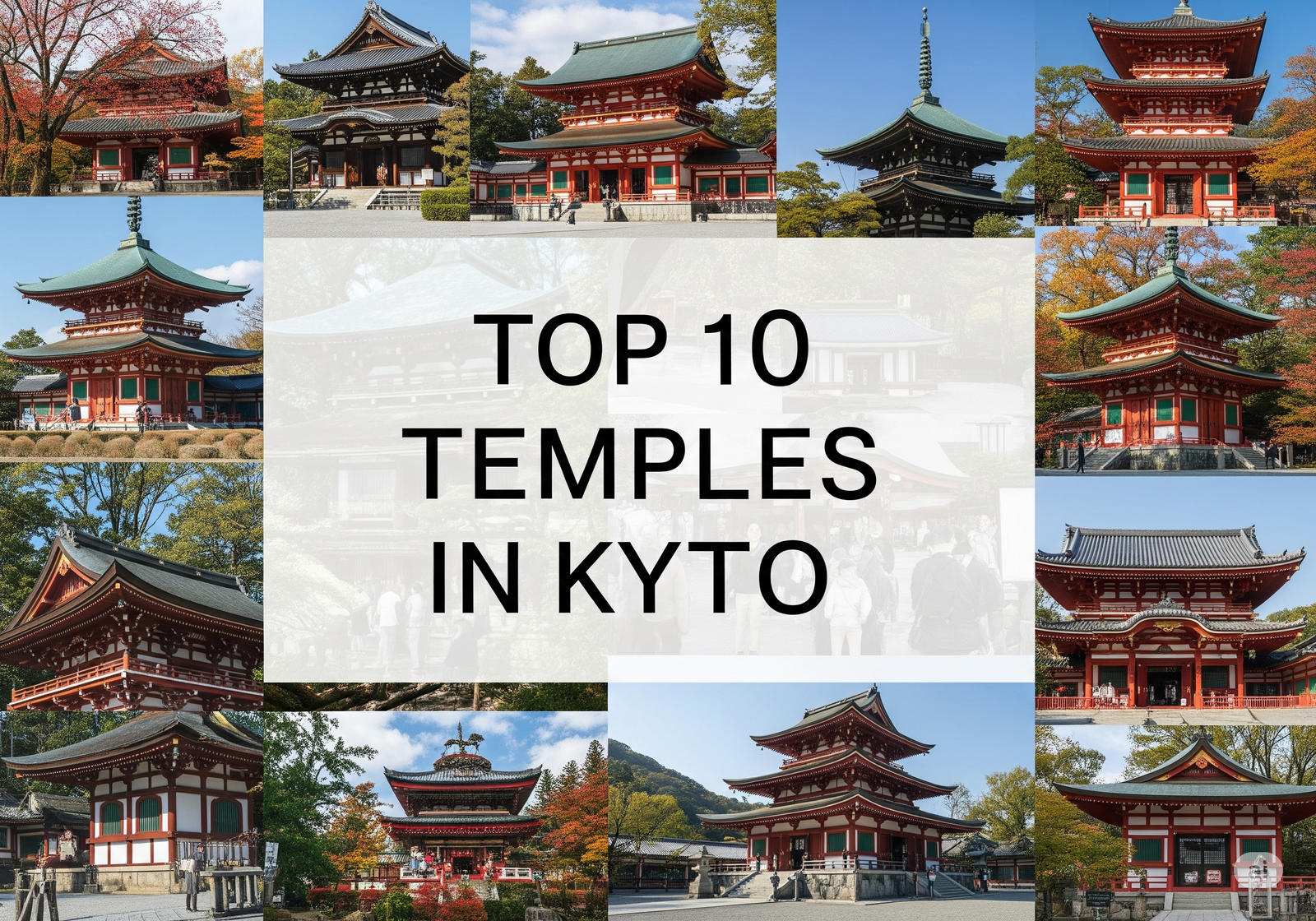






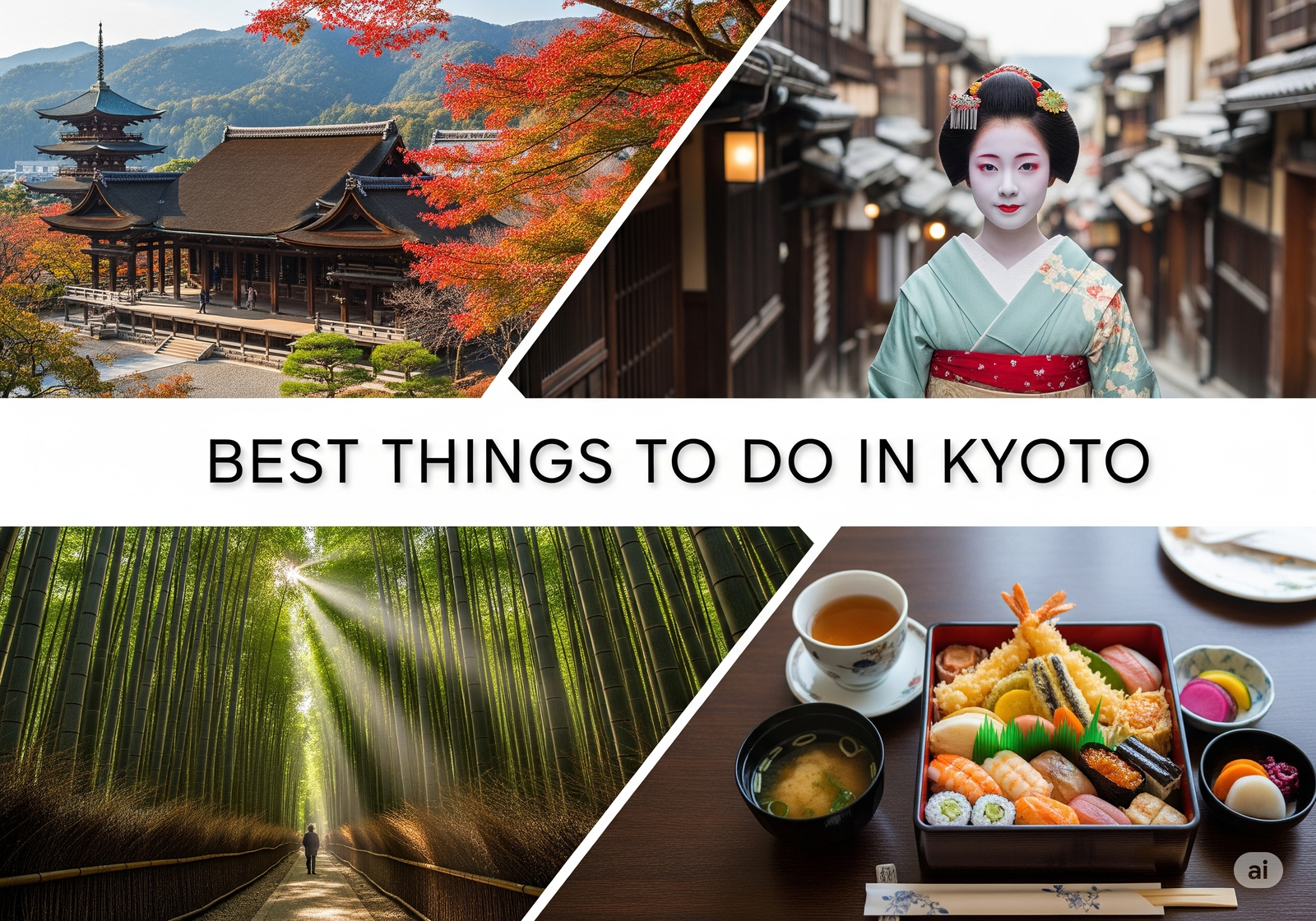





Leave a Reply